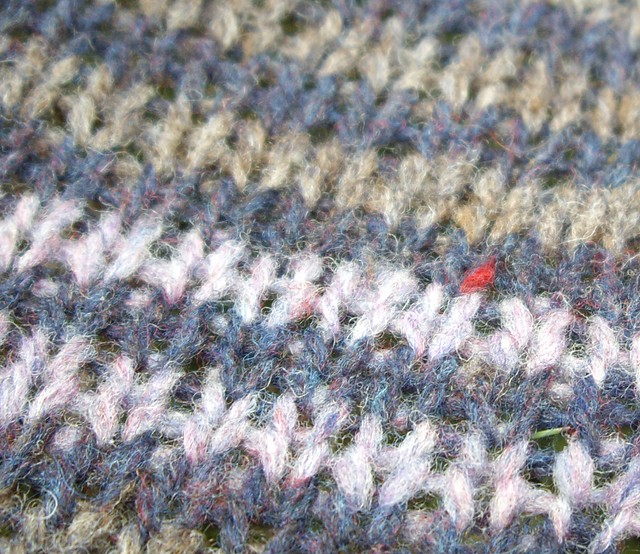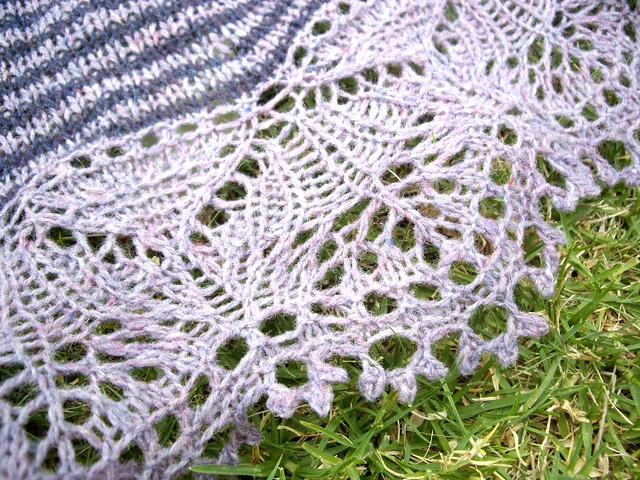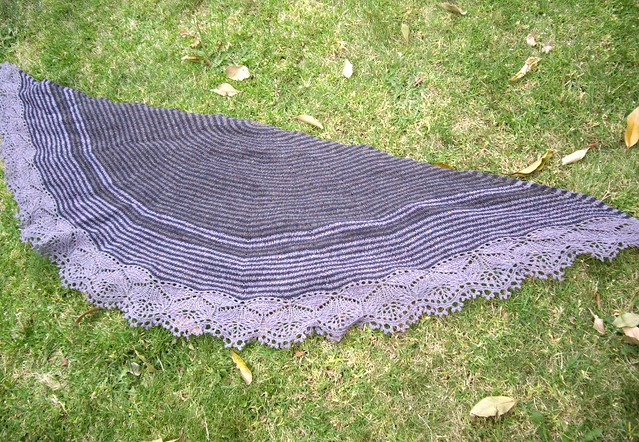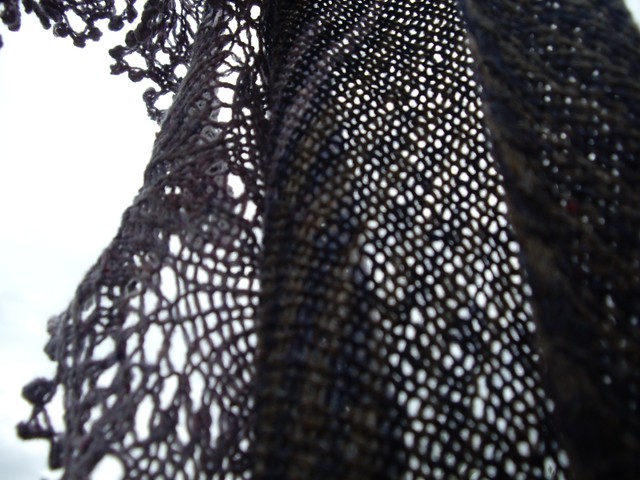So, to round the year out with something familiar:
The Vital Statistics
Pattern: Cladonia by Kristen Kapur of Through the Loops. Wonderful, gorgeous shawl.
Size: The pattern only comes in one size but I increased the size and depth of mine - details below.
Yarn: Brooklyn Tweed Loft in 'truffle hunt' (my absolute favourite), 'old world' and 'blanket fort'. I love that one speck of red in the 'old world'.
Needles: 4mm.
Start to finish: 27 June to 19 December 2012.
Recycle/stash content: Well, it's all recycled from the first Cladonia that I knit but I don't think that really counts ...
Comments: I made considerable changes to this pattern to achieve a shawl that was both deeper and larger (that is, just more surface area altogether). The increase in depth was achieved by making the body increases every sixth instead of every fourth row. If you are making a striped version, this means that the increase will occur on alternating main colour and contrast colour rows (whereas in the regular version the increases are always on a main colour row). These increases all occur on right side rows.
To also make the shawl larger you need to effectively add some segments to the shawl (pattern provides for eight segments, mine has ten and I've seen that some people have increased it to eleven). To achieve the two extra segments, I made twice as many edge increases, half of which occur on wrong side rows; that is, you increase every sixth row for depth but every third at the edge. result is that the first and last of the eight segments are double the size (making effectively 10 segments) and the finished shawl thus four lace repeats wider along the border.
You can see here the elongated first and last segments and overall altered shape here (and that we don't much bother to rake up our leaves):
In order to make these two changes, you also need to make some changes when you cast on. To make the shawl wider/larger, you need to have 2 extra set-up stitches. Knit garter tab as per instructions (10 stitches on the needles: 3 for the garter stitch edge, 4 for the body of the shawl, 3 for the garter stitch edge); then work kfbf into first and last of the shawl body stitches (instead of just kfb) and kfb into the 2 intervening stitches (16 stitches on needles instead of 14).
Lastly, on this version I didn't do the contrast colour row in the edging; didn't feel that it was necessary now that I got the colours in better balance.
Verdict: I think that this is going to work for me now. I am delighted with the finished product and just need to wait for some cooler weather, or stand in the shade.






1 comment:
That's totally fabulous! Let me know if you get sick of it. Ok?
Post a Comment